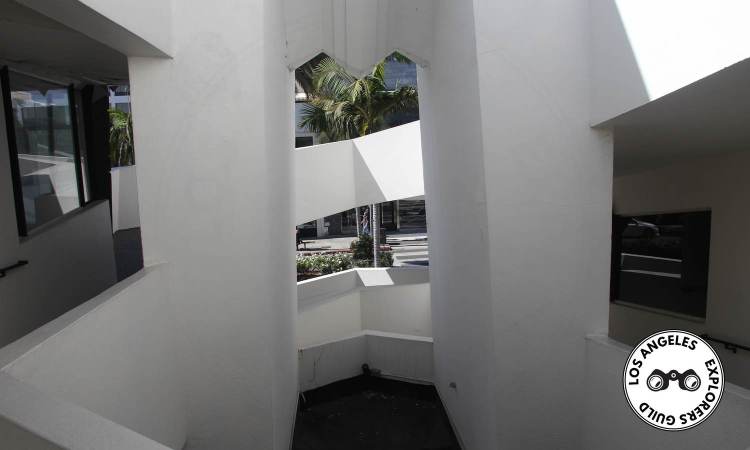Anderton Court Shops
On the swankiest street in Beverly Hills you can visit Frank Lloyd Wright’s last contribution to Los Angeles architecture.
The Shops at Anderton Court
Frank Lloyd Wright is one of the most recognizable names in architecture, and his legacy is writ large in Los Angeles. From the Hollyhock House to the Ennis House (famously featured in Blade Runner) to the Storer House, Wright’s architectural contributions to the L.A. landscape is the stuff of legend.
But the architect’s least known Los Angeles commission — the Shops at Anderton Court — is seen by more people every day than all the others combined. And that’s because it’s located on the world’s most famous street for haute shopping in Beverly Hills.

Unique Design for Rodeo Drive
On a street where ostentatious is the norm, the Anderton Court Shops building, designed by Frank Lloyd Wright in 1952, really stands out from the buildings around it.
This three-story structure of white-painted concrete is only 50 feet wide and just 150 feet deep, but because it’s set back from the street a little more than the other storefronts around it, the building exudes a welcoming courtyard feel, standing in stark contrast to the nearly identical glass-and-steel boxes that otherwise line Rodeo Drive.
The building features a unique hexagonal floor plan and is topped with one of Wright’s trademark streamline moderne spires. Wright’s design is based on a diamond grid pattern that creates what he called an inverted “V,” allowing all the shops to have significant window displays.
He initially conceived the building having four separate retail spaces and a top floor penthouse apartment for the property’s caretaker. But over time the shops were split up and there are now six smaller units, three on each side of the central walkway. The units are vertically staggered a half-floor apart, which makes walking around the building’s central hexagonal light well a journey of discovery.

Nina Anderton’s Legacy
The complex is named after Nina Anderton, a (now deceased) wealthy Bel Air philanthropist (she gave generously to the City of Hope), who commissioned Wright to design a small complex of retail shops for a lot she owned in Beverly Hills.
The resulting structure is notable for a few reasons. It’s the only true retail structure designed by Wright during his illustrious career, and the only non-residential building the architect designed Southern California. It’s also the last building he designed in the Los Angeles area.
The Anderton Court shops opened in 1954 and, except for some relatively minor upgrades (subdividing the spaces), additions (an air conditioning unit on the roof), and cosmetic changes (the building was originally sand-colored with copper accents), still looks very much like it did 67 years ago.
Today most of the shops are empty (only the right shop on the ground floor seems to be occupied), but it’s an interesting place to explore. It’s fun to walk up the unusual oblong central ramp.

Despite its low ceilings and narrow, angular walkway, the space feels bigger than it is. Plus, from the top of the ramp, standing under the distinctive spire, you get a great aerial view of the shoppers scurrying about Rodeo Drive below, something you can’t do at any other building on the street.

As is the case with much of Wright’s work, the Anderton Court Shops are listed on the National Register of Historic Places.
Anderton Court Shops
- 332 Rodeo Drive, Beverly Hills
- GPS Coordinates: 34.068561, -118.402107 [ Google Maps ]
- what3words: ///mint.mixer.grin


Thank you Tom for the wonderful details of my great, great aunt Nina’s building! I hope to visit it some day. I’m proud to be related to her. (I live in her home state of WI. Not surprising she chose FLW!)
😎
LikeLike